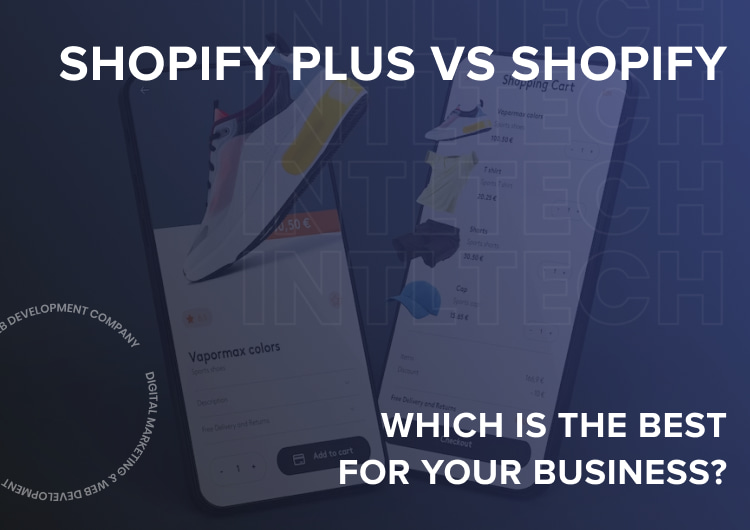Need to choose a programming language for an ios app development? Need a better understanding to create the best working model for your project? Let’s explore two programming languages iOS developers use: Objective C and Swift. They both would be excellent picks and do a great job during mobile app creation, but it’s essential to understand some of the primary differences in their characteristics, working principles, and other crucial factors.
So, without further ado, we invite you to learn more together with the IntlTech team. On our blog, you can also find many interesting articles on other digital marketing topics, so make sure to check them out after finishing this one!
IOS: Objective C vs. Swift Overview
Before a detailed comparison of both modern programming languages, let’s look closely at some essential details and definitions of each one. This way, it’ll be much easier to understand and work with each one.
- Main Features
Swift programming language was developed by Apple; with its help, applications for iOS, macOS, watchOS, and others are created nowadays. It was presented to the world in 2014 as a more effective replacement for Objective C. Thanks to the modern features incorporated into this language, Swift may be used for developing apps with different goals and natures. Here are some of the main features of Swift:
- Understandable code syntax. The easy syntax makes this programming language perfectly suitable for both experienced and novice developers. Type systems and automated references solve some common problems in programming; for example, buffer overflow;
- Automatic memory management system. It is called Automatic Reference Counting (ARC), and it ensures developers don’t need to worry about such things as manual memory management;
- Speed. It’s almost as fast as C-code but without its extreme cost;
- Safe programming language. The safety of this program eliminates many problems typical for programming, making it extremely simple to work with (we are talking about such issues as buffer overflows or null pointer dereferencing).
Objective C. Main Features
Objective C is a general-purpose programming language (PL) used for developing applications for Apple’s Mac OS X and iOS operating systems. Until 2014, it was a primary PL, but it changed after Swift was introduced to the market. Its features are more object-oriented, which is beneficial for the general flexibility and usability of the apps. Here are some of the main features of Objective C that should be highlighted:
- Dynamic binding. It makes Objective C programming language more flexible, making it easier to create better responsive apps;
- Dynamic typing. Thanks to its dynamic nature, this PL also supports Object Oriented programming language, so it’s possible to put up objects and methods during the runtime;
- Trash collection. This feature manages memory without problems, as well as reduces the chances of memory leaks;
- Interoperability with C. Because of this compatibility, Objective C developers can easily use dynamic libraries and existing codes during app development.
More About the Differences
As Swift is newer than Objective C language, it has some features that the second one doesn’t support. That’s why it’s important to keep these differences in mind when choosing the best option for you:
- Safety types. Swift mainly uses value types rather than reference types, meaning variables have a new data copy every time they are modified;
- Type inference. It is typical for Swift, and it allows the compiler to deduce the type of a variable automatically based on the value. This way, there is no need to declare its type to save developers some time and make the code more concise;
- Dynamically typed. Objective C is a dynamically typed programming language, so variables contain values of any kind. Swift’s variables, on the other hand, only include values of a specific type. However, it has dynamic libraries that positively influence iOS app development performance;
- Polymorphism. Swift’s protocol enables developers to write code that can be applied to any protocol without knowing the specific type. Meanwhile, Objective-C’s categories are only suitable and effective for extending the functionality of a specific kind.
Pros and Cons Analysis
Now that we know more about the main features and differences between the two languages let’s discuss the pros and cons of both to understand which one will be the most suitable for your goals.
Swift
Pros
- Swift is safer and less likely to crash because eliminating unsafe code is in its nature. This one is not a surprise as safety was always Apple products’ specialty, so Swift is much more reliable than its counterparts;
- Swift’s syntax is quite similar to Javascript, so beginners can easily use it to write and read. On top of that, coders who learn new programming languages find it much easier to master Swift;
- Swift is faster compared to other PL. It is almost 2.6x faster than Objective C, so developers’ experience with it is more pleasant;
- A great community is always open to collaboration and newer ideas due to the open nature of Swift.
Cons
- Swift is a relatively new programming language, so it may take time for the industry to deal with legacy issues, master Swift, and switch to a brand-new code;
- Swift is not compatible with basic code basis versions and cannot collaborate with them successfully, so each addition to new Swift variations must be perfected with related changes;
- As backward compatibility is basically absent, Swit cannot be used with third-party tools and integrations, as it would stop working as soon as the version is altered.
Objective C
pros
- Objective C works well with any available version of iOS. That’s beneficial for developers who don’t have to worry about constant iOS changes;
- It has libraries and built-in tools, so the development process is much faster. This way, the work can be done quickly and with minimal effort;
- Extending Objective C functions, altering their original form, and customizing them according to the set goal is possible. It gives the ability to customize and improve programs.
Cons
- Objective C syntax is complex and can be challenging to understand. That’s why people who chose it as their first language may struggle, as even experienced developers have difficulties with this PL sometimes;
- It takes a long time to code with this language due to its complex structure, and many people out there are looking for options that take minimal amount of time and resources;
- Fewer people have used Objective C nowadays since Swift entered the market. It’s a normal part of progress, and as youth enter the market, they choose simpler variants, as it takes less time to learn how to work with them.
The Bottom Line: Swift vs. Objective C
Swift and Objective C – programming languages used for mobile app development; even though they are similar, some essential dissimilarities must be considered to pick the best variant to get the highest quality final product.
Discover the latest trends and advancements in healthcare web development as we delve into what to expect in 2023. Our IT blog at IntlTech provides valuable insights, covering topics such as telemedicine, patient portals, data security, and more. Stay ahead in the ever-evolving healthcare industry by exploring our expert analysis and predictions for the future of web development in healthcare.
While Swift is primarily used for Apple operating systems used for various products by this company, Objective C is the best for operating systems like OS X and iOS for iPhone, Mac, and other devices by Apple. Hopefully, now you have a fairer idea about the “Swift vs. Objective C” topic, as we made sure to present everything in an easy, understandable way. Thanks for visiting the block; make sure to keep updated for more exciting articles!
 0
0






